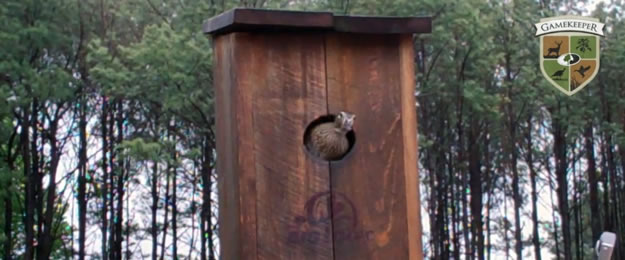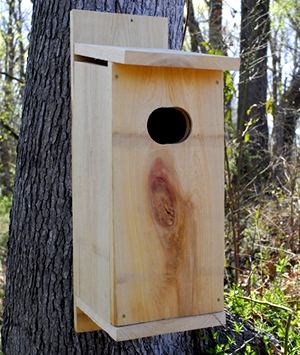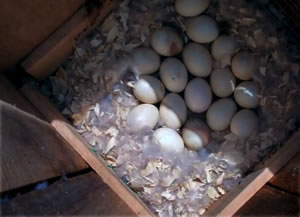
Providing the Perfect Nest for Our Most Colorful Waterfowl!
The most abundant species of waterfowl found in the eastern half of North America was once the wood duck. Unfortunately, as with many species, this particular group met with a huge struggle at one point that almost led to their complete demise. From finding themselves in densely populated areas which led to over-harvesting to the literal disappearance of bottomland habitats, the wood duck suffered immensely. Nearing extinction, it wasn’t until the mid-20th century, when the Migratory Bird Treaty Act was put into place that these amazingly colorful birds began to regroup and rejoin our world.
 But it was not only this Act that brought the wood duck back into being. Their saving grace also came from the building of wood duck boxes - which were faux structures that allowed the wood duck population to nest out of sight and away from predators. These boxes, made from cypress, became the homes for many, and literally saved thousands, as various environmentally-conscious groups, organizations and citizens began to erect them; a task that is still needed and practiced today.
But it was not only this Act that brought the wood duck back into being. Their saving grace also came from the building of wood duck boxes - which were faux structures that allowed the wood duck population to nest out of sight and away from predators. These boxes, made from cypress, became the homes for many, and literally saved thousands, as various environmentally-conscious groups, organizations and citizens began to erect them; a task that is still needed and practiced today.
VIDEO: Wood Duck Box Conservation
Creating a nest in the hollows, nooks and crannies that trees provide, the female of the species usually found a place to nest near wetland regions. But finding a natural site can be extremely difficult, which is why wood duck boxes are still the best alternative to provide safety for the species.
Designing and building a wood duck box is an important endeavor; various factors have to be taken into account to make sure that the wood ducks are receiving the best home they possibly can. The two most important things to be aware of after discovering an appropriate site is how best to erect a weather-resistant box, and how best to design the nest so that predators are able to be kept far away.
Cypress is the best wood to use for the box. A completely weather-resistant wood, cypress provides the best long-term care. In addition, making sure the box has a large sloped roof that overhangs all sides, will also provide extra protection.
When it comes to locating a suitable habitat to place the wood box, you want to make sure that water is available within a couple hundred yards of the nest so the ducklings will be able to survive once they advance into the real world. The best habitat is still the shallow, fertile wetlands that offer thick cover to protect the brood, but if that type of area is simply not available, make sure the water supply is.
Building the box on wooden posts or metal conduits that are outfitted with predator guards is a necessity. In many cases, conical guards made of sheet metal are extremely effective to keep away that lurking predator. And take the time to make sure that there are no tree limbs overhanging the box that can offer the raccoon or evil snake a way in.
Provide a layer of wood shavings for nesting material. This allows the female a natural substance she can use to cover the eggs when she takes a break to feed herself during the incubation period. And boxes should always be cleaned out and replenished with fresh nesting material every year in the late winter, making sure that everything’s ready before nesting begins in early spring.
 To make the monitoring and upkeep even more simplistic, create the box with a top and/or a side that opens. Even a hinged roof is a good idea - that way, when inspecting and maintaining a box - if there happens to be a wasp nest waiting for you, it will be far easier to remove.
To make the monitoring and upkeep even more simplistic, create the box with a top and/or a side that opens. Even a hinged roof is a good idea - that way, when inspecting and maintaining a box - if there happens to be a wasp nest waiting for you, it will be far easier to remove.
Yearly maintenance is a must, seeing as that wood ducks will increase usage of the box and the nest will become even more productive. Things to put on your annual maintenance checklist are; cutting back any tree limbs or shrubs that make it easier for predators to access the nest and bypass the protective guard; cleaning out any extras, like that unwanted wasp nest; and making sure fresh wood shavings are in the box before Mom arrives.
In the end, not only is the process of designing and building a wood duck box a whole lot of fun. It’s also a great art to teach your child, grandchild, or friend so that everyone is doing their part to save the colorful, wood duck. As a GameKeeper, it's important to manage your land to accommodate ducks for increasing populations.



























